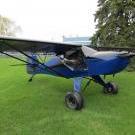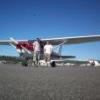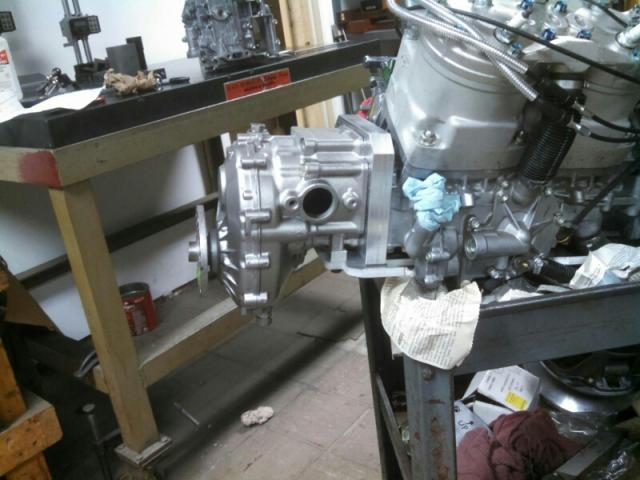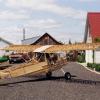Activity Stream
Posts Activity Stream
-
-
Do any of you know what I need to do with the trailing edge of my flaperon on my kitfox 1, does it need to be riveted together or let the glue be enough. If I do need to rivet it together and you have a picture please post it so I can see how they are laid out thanks.
-
Leon
That's the info I need, 07-09, is the castings and crank output the same, my friend is using a 2010 snow pro sled for electrical and engine, says some of the engine components were lighter?
-
-
-
Key word being light. I have 20 hrs behind one and side by side the same machine with a 582 would outperform it in every aspect except fuel burn they sip gas. With two people on board it was marginal. I think it would be a better match for a single seat skyraider or maybe an A model.
-
I've seen a few of them (HKS) on Barnstormers in the last 6 months or so for around $5000. Should be a nice engine on a light airplane. Jim Chuk
-
-
-
It depends on the year. 07- 09 were bullet proof, then they started changing it up. To get 160 hp it's gonna be running hard. I figure off the dyno charts it should be around 120 at 6800 rpm. It's a 76-7800 rpm engine in a sled.
-
-
I had good luck spraying thinned out latex with a Harbor Freight gun. I attended a latex seminar at Oshkosh. Lots of people have had it work out for them. Check out Weinerdogaero.com
-
He had some computer troubles last time he posted. Sounded like a browser/ popup flooding. I hope he didn't think it came from this site.
-
I bet if you cant Figure it out you could always get a set of highway pegs for a motorcycle, they just clamp on too. Just a thought.
-
I know I hate to refer anyone to "the other site" but this has already been gone over with good results http://www.teamkitfox.com/Forums/showthread.php?t=415&highlight=wagnerI personally bought the Wagner Control Spray Plus and shot all of my ekofill with it. worked great. was going to use it for the top coat too but a friend hooked me up with a complete paint booth set up with air so I went that route. good luck
-Robert-
-
Did you know that HKS is back in production? These make an excellent engine in an early (light) Avid or Kitfox.
Here's an Avid C with one: https://m.youtube.com/watch?v=IOnOrQKaH6M
-
-
The candle that burns twice as bright burns half as long.
Leni will argue with this, but the fact around these parts is A/C 800s are far from reliable in a sled. I wouldn't trust my life behind one in an airplane.
One mans opinion.
-
-
1 person likes this -
No. Flex agent is tempory when used in most modern paints. I have been told by a PPG rep that flex agents dry out in the first 90 days, leaving the paint brittle or only as flexible as paint with out flex agent. I did my own experiments after talking with a couple of tech reps at PPG. PPG makes a paint called desothane. It is specifically designed for fabric covered airplanes. The product is not available to anyone except companys that buy it in bulk and relable it and sell it for painting fabric covered airplanes. After some digging I was lead to believe that aue-300 and desothane are basically the same animal. I let some aue-300 dry in the bottom of a mixing cup and I let aerothane dry in the same size mixing cup. When each sample hardened I popped out the hocky puck sized sample, labled them and stuck them on a shelf. Every once in a while I would pull the pucks down off the shelf and bend them and hold them against each other to see if one shrank more than the other or if one was more flexible than the other. After a 5 year test period I could find no difference between the two samples. Both were the same size and of the same flexibility. I am not a chemist and don't advocate or guarentee this paint to be crack proof for any one else. This was my findings and I have been happy with the results so far. It could crackup and fall apart after the 5 year mark but I am willing to take that chance.
-
That's a variation on the type I had in mind. Good to know you can get them from Spruce. I might have to get one of those crimpers.
-
Now that you mention it, I have been thinking things have been pretty quiet on here lately. He usually keeps things lively. Hope everything is okay.
-
did you have to put a flex agent in the yellow then, It looks great. I have a ways to go before Im ready for the paint.
-
Poly Fibers aerothane on the fuselage, poly tone on the wings. The yellow is PPG AUE-300 single stage polyurethane, very similar to Aerothane but less than half the price.











trailing edge of flaperon
in Avidfoxflyers General Hangar
C5Engineer
Posted
Just checked my barn Avid and it has rivets every 3 inches.